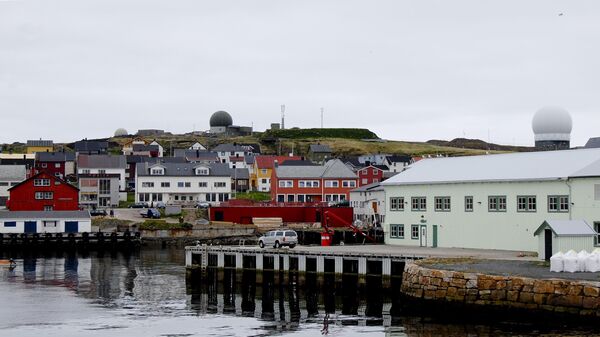Locals in the town of Vardø in Norwegian Arctic, which is home to the US surveillance radar Globus II, are ablaze with criticism over its planned successor, Globus III. They argue that it will be much larger and more imposing than the plans initially showed, national broadcaster NRK reported.
"I don't think it adds up. On paper, it seems as if the radar is barely visible, but in reality it will be at least as high as Globus II," an indignant local man, Frank Steinar Eines, told NRK.
With several levels below the ground, the scaffolding for the new radar already has ten floors, NRK reported, citing sources associated with construction work, which is underway seven days a week under strict security measures. Workers with the lowest security clearance are closely supervised by their superiors, and no mobile phones and other electronics are allowed during the construction, which the Norwegian Armed Forces claim to be a "modernization."
However, in Vardø, there is mounting dissatisfaction over the scarcity of information about the new radar. The secrecy has spawned fears that the authorities may be covering up health hazards and other dangers.
"It's almost ridiculous. It's a CIA thing, so it's top secret. We don't know anything. All we know that a new radar is coming that is it 'not dangerous.' Otherwise, the information has been inadequate," Vegard Bangsund, another local resident, complained.
As Norway's incumbent Defense Minister Frank Bakke happens to be born and bred in Finnmark County, Bangsund had a message for his fellow townsman.
"No, Frank. You have to let us know and let at least some of the eight to nine billion kroner [the estimated construction cost] seep through to the Vardø municipality. It would be more that right and reasonable," Bangsund said.
READ MORE: Surprise! Norway Surveils Russia More Than Vice Versa
According to NRK, many locals are critical, but refused to be interviewed, as the radar provides the much-needed jobs for Norway's north-easternmost town of 2,100 people, half the population it had in the 1970s. In the development phase alone, 15 Norwegian electricians have been employed in preparation work that resulted in upped power supply to the settlement, where fisheries that sustained its population for generation have almost collapsed in recent decades.
However, despite the welcome boost for the ailing economy, Vardø Mayor Robert Jensen is also critical about the information provided.
"The information could have certainly been more accurate. As we see it today ourselves, [the radar] is larger than the plan showed," Jensen said.
Before being mounted on the fells of Vardø, Globus II was previously located at Vandenberg Air Force Base in California and was originally designed to collect intelligence data about ballistic missiles.
It is currently administered by the Norwegian Intelligence Service and operated by Norwegian personnel only, its official task being "monitoring movements in the airspace of the Barents Sea and additional areas of interest in the North."
Its successor, Globus III, is projected to enter service in 2020.
READ MORE: Denmark Revives Cold War-Era Spying Tower to Eavesdrop on Russia
Måneskinn og stjerneklar høstkveld i Vardø. #Vardø #Vardo #ivardø #varanger #finnmark #Norway #nature #mediemakern #harbor #beautiful #beautifull #amazing #svarthvitt #blackandwhite #valhall #sea #ocean #kai #brygge #dock #docks #pier #piers #fishing #st… https://t.co/uqjBUz6WR9 pic.twitter.com/OsG3BFhAci
— Dan Tore Jørgensen (@DanTores) January 7, 2018





